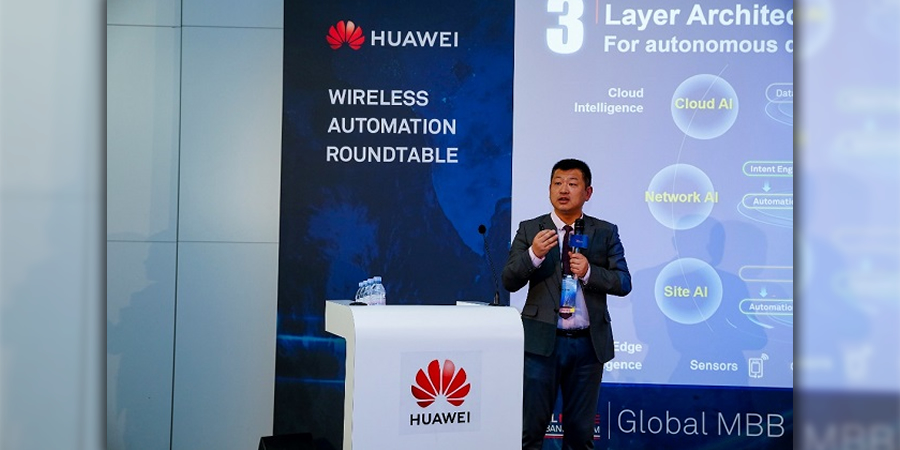Huawei officially released the Mobile Automation Engine (MAE) solution during its first wireless automation roundtable which was held during the 2018 GMBBF. The solution aims to accelerate full-scenario autonomous driving in mobile networks.
The OPEX of telecom operators remains high currently. With the advent of 5G, mobile operators will face the coexistence of multiple RATs (including GSM, UMTS, LTE, and NR) for a long period of time. Network becomes much more complex, posing many challenges to network O&M, performance improvement, and user experience assurance. The industry has reached consensus that network automation is essential to reduce OPEX.
“Drawing on the concept of autonomous driving levels, telecom operators need to approach full network automation by-scenario and by-level based on the O&M workflow,” said Zhou Yuefeng, CMO of Huawei Wireless Solution. He continued, “Huawei recently released the white paper Key Scenarios of Autonomous Driving Mobile Network, which describes seven key scenarios, such as base station deployment and network performance improvement, to unify industry consensus and gradually realize automation of these key scenarios.
The MAE solution carries three major concepts: All-scenario oriented, AI inside, and Autonomy by layer (3A).
- All-scenario oriented: Network operation transfers from NE-oriented to scenario-oriented.
- AI Inside: AI capabilities are introduced to build an intelligent engine that converges management and control, endowing the network with new capabilities, such as scenario awareness and identification, network prediction, and self-learning.
- Autonomy by layer: Closed-loop autonomy is used to shield the various scenarios and enable efficient collaboration. Customers only need to focus on intentions and policies.
“Huawei's MAE solution has shown its values in some key scenarios through the practice with our customers, bringing confidence to the industry,” said Zhou. He concluded, “Let us accelerate the application of AI in mobile networks, jointly promote autonomous driving networks, and embrace the fully connected, intelligent world.”
